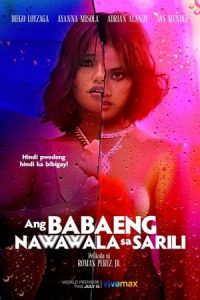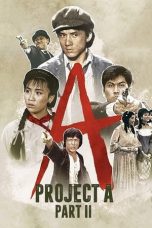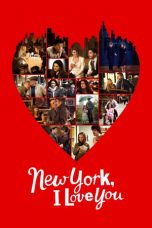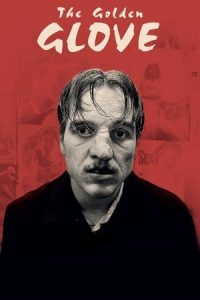- Source: Nsala of Wala in the Nsongo District
Nsala of Wala in the Nsongo District (Abir Concession) is a photograph published by Edmund Dene Morel in his book King Leopold's Rule in Africa, in 1904. The image depicts a Congolese man named Nsala examining the severed foot and hand of his five-year-old daughter, Boali. The photograph was taken by Alice Seeley Harris, the wife of a missionary, in the village of Baringa on 14 May 1904. It was subsequently employed as a tool in the media campaign against the inhumane situation in the Congo Free State, which was largely characterised by rubber exploitation.
It is part of the Harris Papers, a collection owned by Anti-Slavery International.
Description
The picture shows a man dressed only in a loincloth sitting on the edge of a veranda in the centre of the picture, photographed from the veranda. His gaze is directed in front of him, towards the bottom left of the picture, at the severed hand and foot of a child lying on the veranda. In the right-hand half of the picture, further back in the picture, standing in front of the veranda, two other male figures, equally clothed, can be seen looking towards the viewer of the picture. A fourth person stands in the background of the picture, also in the right-hand half (the picture was printed in various sections and partly mirror-inverted; the position and directional details refer to Morel's print).
Historical background
The Congo Conference of 1885 resulted in the effective grant of the Congo Free State to King Leopold II of Belgium as personal property. During the period of the Free State, the population was subjected to a systematic policy of forced rubber harvesting. The enforcement of these policies resulted in numerous instances of abuse and a significant number of deaths. By the end of the nineteenth century, there was a considerable demand for rubber, which made this form of exploitation highly lucrative for Leopold. Initially, the atrocities resulting of this exploitation were either negated or concealed.
Based on estimates by witnesses and later censuses, the number of deaths caused by colonial policy during the Congo Free State period varies widely, starting at around 2.2 million. Higher estimates put the population decline at up to 21.5 million. In 1998, Adam Hochschild considered a figure of around 10 million deaths to be realistic.
The coercive measures were subsequently enforced by the Force Publique, the Free State army, and by private militias from the rubber companies involved, such as the Anglo-Belgian India Rubber Company (ABIR). Both forces recruited in the Free State and those from other African regions were deployed.
In 1877, the first Baptist missionaries from Great Britain began work in the area that would become the Free State. They were later joined by American and Belgian groups from various denominations. According to Leopold and the missionaries, colonialism in the Congo served the purpose of 'civilisation' and was largely driven by conversion to Christianity. They emphasised that this was linked to the fight against the slave trade, cannibalism, and polygamy.
At the beginning of the 20th century, reports about the conditions in the Congo Free State began to attract significant attention in the Western world, leading to a growing chorus of public criticism of Leopold's policies. The Congo Reform Association, which was co-founded by Edmund Dene Morel, is regarded as being particularly influential. Missionaries and missionary societies also publicly denounced the situation in the Congo Free State and published reports on the subject. The advent of photography also had an impact on this situation, with images reaching the public via newspapers, magazines and lantern shows. The relatively new possibilities of mass reproduction of photos via printing screens and the development of faster, lighter, smaller and less expensive cameras also contributed to this. Leopold attempted to counteract the criticism through lobbying and public relations work and by setting up a commission of enquiry. In 1908, Leopold sold the Congo Free State to the Belgian state.
ABIR held a concession to exploit the forest resources of the Lopori-Maringa basin. The location depicted in the photograph, Baringa, is situated on the Maringa river, to the south-east of the town of Basankusu. This is where the Maringa and Lopori rivers converge, and it is also the location of the ABIR base of operations, which had been in place since 1893. Following a reorganisation of the company in 1898, the Congo Free State held a 50% stake in ABIR, with the remaining shares distributed among a Belgian banker and the Société Anversoise, another rubber company based in the Congo. The rubber was obtained in the ABIR region through the tapping of certain vines, predominantly of the subspecies Landolphia owariensis gentilii. The repeated cutting of the tendrils for this purpose resulted in their desiccation and, in some cases, mortality. Furthermore, complete severance for tapping resulted in the death of the rubber tendrils. In 1904, the year the photograph was taken, it was reported that the rubber reserves within 50 miles of the majority of ABIR's posts had been almost completely exhausted. Moreover, the amount of rubber exported through ABIR fell by approximately 50% between 1903 and 1904.
Prior to the commencement of rubber exploitation, the majority of the inhabitants of the Lopori-Maringa basin were engaged in agricultural activities. However, there were also those who pursued fishing and hunting as a means of subsistence. Prior to the establishment of the Congo Free State, the region was characterised by a history of armed conflict and enslavement throughout the nineteenth century. In the 1880s, the region was subjected to repeated raids by traders from Irebu, who were engaged in the procurement of slaves and ivory.
The ABIR had posts scattered throughout the area, each responsible for a region and staffed by one or two European employees who received commissions on the rubber delivered and whose salaries were reduced if a quota was not met. Based on the number of men in a village, the posts in turn set rubber quotas for each village, which the ABIR guards were responsible for collecting. If the quotas were not met, the guards were threatened with pay cuts, dismissal, imprisonment or flogging. While a few guards ("post sentries") were equipped with comparatively modern Albini-Braendlin rifles, the guards stationed in the villages ("village sentries") used muzzle-loading rifles. The sentries were sometimes required to produce a right hand for each cartridge used as proof of their work. The ABIR had the support of the state army, which sent troops based in Basankusu to quell any strong resistance from the population, as well as logistical support and weapons licences.
Although, the men forced to collect the rubber were paid for it, the company had prisons where men who failed to meet their quotas were held and forced to work. Wives or other close relatives were often taken hostage instead, which had the advantage of allowing the man to continue collecting rubber. If villages failed to meet their quotas, their leaders were often taken hostage.
The village of Wala was in the domain of Nsongo Mboyo, a collective of settlements situated within the boundaries of the ABIR concession, which has since been designated as groupement. According to the data provided by the state Réferentiel Geographique Commun (RGC), this area is located to the east of Baringa and to the north of Maringa. In 1903, over 1,000 individuals from Nsongo Mboyo who had attempted to flee the concession area were forcibly relocated to the Lireko labour camp. In May 1904, 83 people are believed to have been killed by ABIR personnel in Wala alone.
Assessment of the local situation by the missionaries of Baringa
John Harris, husband of Alice Harris, provided testimony before the Commission of Inquiry into Crimes in the Congo, an entity appointed by Leopold in 1904. "So far as we are aware, no single sentry had ever been punished by the State till 1904 for the many murders committed in this district." Edgar Stannard, a medical missionary in Baringa, informed the Commission that the ABIR guards had utilised Albini rifles, which they were legally prohibited from carrying, to suppress riots in Nsongo. Harris and Stannard additionally indicated that ABIR administrators had guards flogged if they had not killed a sufficient number of people. John Harris stated in 1905 that the guards in the Nsongo district were known for engaging in cannibalistic practices. Edgar Stannard recounts statements by Nsongo residents indicating that guards from the area were originally deployed but were subsequently relieved of their duties and disarmed by "the white man" due to their failure to kill "their own people". They were then replaced by guards from areas known for cannibalism. Robert M. Burroughs posits that Harris's characterisation of the guards as "ignorant, uncivilized and to a large extent cannibal" represents an instance of a comparatively progressive-minded individual adopting the idioms of the defenders of the Free State, thereby problematising the missionaries' narratives of indigenous statements as an expression of the missionaries' point of view, set against the backdrop of their opposition to many expressions of cultural autonomy.
Missionaries' account of how the picture came about
The events that form the background to the picture are described in detail in the letters written by the Harrises and Stannards. On 15 May 1904, Alice Harris corresponded with Raoul Van Calcken, the head of the ABIR post at Baringa. The Baringa missionaries John Harris and Edgar Stannard corresponded with the founder and then head of the Baptist Congo-Balolo Mission, which employed the Harrises, and the co-founder of the Congo Reform Association, Henry Grattan Guinness, on 19 and 21 May, respectively. A review of Stannard's letter reveals the following sequence of events:
On 14 May 1904, the day of the shooting, John Harris had travelled to a meeting in Jikau. Shortly after 8 a.m. that morning, while Alice Harris and Edgar Stannard were at the Harris residence, two boys at the mission informed them that guards had killed several people and that two men were en route, bearing hands as evidence. The boys were instructed to notify Harris and Stannard if the men returned. Subsequently, the men arrived at the residence of Harris and Stannard and were requested to display the hands. One of the men presented a hand and foot, which Stannard estimated to be recent and potentially belonging to a child of approximately five years of age. One of the two men, Nsala from Wala, identified himself as the father of the deceased Boali, to whom the limbs had belonged. It was reported that fifteen guards had arrived in Wala the previous day intending to collect rubber, despite the scheduled delivery date having been set for three days later. Two of the assailants were armed with Albini rifles. In addition to Boali, Nsala's wife Bonginganoa and a boy named Esanga were also victims of the attack, having been shot and subsequently dismembered and cooked. Three other individuals had sustained gunshot wounds, one of whom, Eikitunga, had fallen into a river during her escape and drowned. Furthermore, the guards had apprehended ten individuals, nine of whom were women. These women, as corroborated by a judge named Bosco and Stannard's account, were not held responsible for rubber collection. Nevertheless, eight women were released in exchange for a financial transaction.
According to his own statement, Nsala had secretly picked up his daughter's hand and foot in order to use them as evidence. When asked whether he had cut them off himself, he denied this. Finally, Alice Harris took the photo on the veranda of the house. She used a Kodak dry plate camera for her photos. Edgar Stannard described Nsala as "dazed with grief", "horror-stricken" and "sorrowing".
Historian Kevin Grant suspects that Alice Harris used an interpreter during the conversations due to her limited knowledge of the Lomongo language used in the region.
Prior to their encounter with Harris and Stannard, the men had already met Raoul Van Calcken, representing ABIR. Subsequent to the intervention of Harris and Stannard, he asserted that he had not been presented with the hand and foot, a claim that was at odds with the statements made by the two men from Wala. Two days later, Bompenju and Lofiko, Nsala's brothers, visited the mission and corroborated the accounts provided by the two men from Wala regarding the incident in question. In this instance, Botondo, who was employed by the mission, stated that he had observed Van Calcken being shown the hand and foot. The house labourer Bokalo provided a detailed account of how the two men, who had been asked to show the limbs at the mission, expressed fear before the encounter with Harris and Stannard. They had been told not to do so by the "rubber white man". Harris and Stannard were also informed that an individual whose name had been redacted in Morel's edition of Stannard's correspondence had directed the security personnel to eliminate certain individuals. Upon learning that the British missionaries were aware of these killings, he instructed the guards to refrain from further action. The following day, other individuals informed Stannard that some detained women had been relocated outside the ABIR prison facility to prevent the British missionaries from learning about the arrests of women.
Stannard undertook a visit to Wala between 24 and 26 May. He was informed that one of the wounded had succumbed to their injuries during his absence. He proceeded to examine the corpse and concluded that the cause of death was a bullet wound. Additionally, he discerned that the injuries sustained by the chief Elisi, whom he treated the following day, were likely caused by a bullet. Elisi provided a detailed account of how the guards from Lifinda/Lifunda initially apprehended several individuals upon their arrival. Upon inquiring with their leader, Lifumba, as to the rationale behind the attack, noting that the scheduled rubber delivery was not due for another three days, he was met with gunfire from an Albini rifle. Other sources, including the chief Mpombo, indicate that the killings and subsequent feedings occurred at a later point in time. According to these accounts, Boali was shot by Likilo, Bondingangoa by Mboyo, and Esanga by Lomboto.
Further reports indicate that the guards remained in Wala for one night and subsequently returned to Lifinda the following morning. On their return journey, the guards, when questioned by Bokumgu Isekolumbo regarding the rationale behind the delivery date, are said to have shot him. Additionally, at Stannard's request, suspected bone fragments from individuals who had been consumed were shown. One piece was claimed to have belonged to Boali's forearm, while another was purported to be from the leg of a woman named Balengola.
As Stannard states in his account, he and John Harris reported the events in question to Judge Bosco on 4 June, as the judge was requested a meeting in writing. Stannard signed a statement regarding certain aspects of the case.
Further photograph five days later
In his correspondence, Edgar Stannard also reports another testimony from Nsala's brothers and another photograph. After John Harris had returned on 19 May, Bompenju and Lofiko visited the mission again the following day with a third man and reported three more deaths. One had been eaten, and they showed the hands of the other two, Bolengo and Lingomo. Alice Harris took a photo of the three men with the hands, John Harris and Edgar Stannard. John Harris went to Van Calcken with the men. Alice Harris and Edgar Stannard spoke to other residents of Wala, who said that the killings had taken place three days earlier, involving a woman, a man and a boy.
Use of the image
In his letter to Guinness, dated five days after the image, John Harris wrote about it:"The photograph is most telling, and as a slide will rouse any audience to an outburst of rage, the expression on the father's face the horror of the by-standers the mute appeal of the hand and foot will speak to the most skeptical."He also wrote, "[it] might be useful to the Government".
The photograph was dispatched by Alice Harris to the Marquess of Bath, who was acquainted with her father. Additionally, members of the British parliament from her father's social circle were in receipt of the photograph.
The image was disseminated through various print media outlets, such as newspapers and periodicals. Upon their return to Great Britain in July 1905, the Harrises presented their transparencies in Europe and North America. These included a compilation entitled Lantern Lecture on the Congo Atrocities, which features the image under the title Nsala with his child's hand and foot. However, T. Jack Thompson from the Faculty of Theology at the University of Edinburgh has stated that it is no longer possible to determine whether Guinness also used the photograph in his presentations due to the loss of the transparencies.
In his 1904 work King Leopold's Rule in Africa, Edmund Dene Morel included the picture and the letter from Stannard to Guinness which describes the circumstances surrounding its creation.
Additionally, the image was reproduced in Mark Twain's 1905 pamphlet, King Leopold's Soliloquy, which was written from Leopold's perspective and offered a critical account of the Free State. The following description was provided:"Foot and hand of child dismembered by soldiers, brought to missionaries by dazed father. From photograph taken at Baringa, Congo State, May 15, 1904. See Memorial to Congress, January, 1905."It refers to a Memorial to Congress, an address to the US Congress in January 1905.
The image also illustrates journalist Adam Hochschild's successful 1998 book about the Free State, King Leopold's Ghost.
In October 1905, Alice Harris signed a declaration stating that she had taken her pictures in good faith, following accusations of forgery against pictures taken by missionaries. Contemporaries also criticised the pictures as being ideologically motivated by the Harrises' Protestantism.
Contemporary assessments of the image
Robert M. Burroughs posits that the image acts as a witness, rather than resulting from the photographer's performance, because it emphasises the active involvement of the victim Nsalas. T. Jack Thompson, meanwhile, suggests that the Harrises' images diverge from those taken by previous missionaries, who sought to contrast "European civilisation" with "African savagery" and "Christian light" with "heathen darkness".
Sharon Sliwinski, a member of the Faculty of Information and Media at the University of Western Ontario, described the image as "formally posed, almost peaceful." She further elaborated that:"Painful scrutiny is required to make out the items in front of Nsala. The object closest to him appears to be his daughter's foot, lying on its side, severed end tipped towards the camera; the object furthest is Boali's little hand, resting palm side down. These tiny body parts explode the peaceful composition of the image and illustrate an uncanny inversion of the typical representation of the injury: rather than picture a child with missing limbs, here Nsala poses with the remains of his missing child. Missing is not really the right word – Boali is more than simply absent from the scene – but perhaps there are no words which could appropriately describe the devastating affect of her nonexistent presence."Wayne Morrison from the Faculty of Law at Queen Mary University described the picture as "[o]ne of the most dramatic" of the images that reached foreign countries from the Free State. Robert M. Burroughs described the picture as Alice Harris' "most famous photograph". T. Jack Thompson described the picture as "haunting".
See also
Cannibalism in Africa § Congo Basin
Congo Free State § Cannibalism
List of photographs considered the most important
References
Literature
Burroughs, Robert M. (2011). Travel writing and atrocities: eyewitness accounts of colonialism in the Congo, Angola, and the Putumayo. Routledge research in travel writing. New York: Routledge. ISBN 978-0-415-99238-1. OCLC 436030550.
Congo reform association; Belgium. Commission chargée de faire une enquête dans les territoires l'État du Congo (1905). Evidence laid before the Congo Commission of Inquiry at Bwembu, Bolobo, Lulanga, Baringa, Bongandanga, Ikau, Bonginda, and Monsembe. Together with a summary of events (and documents connected therewith) on the A.B.I.R. concession since the Commission visited that territory. University of California Libraries. Liverpool, J. Richardson & Sons, Printers.
Grant, Kevin (2001). "Christian critics of empire: Missionaries, lantern lectures, and the Congo reform campaign in Britain". The Journal of Imperial and Commonwealth History. 29 (2): 27–58. doi:10.1080/03086530108583118. ISSN 0308-6534.
Harms, Robert (1975). "The End of Red Rubber: A Reassessment". The Journal of African History. 16 (1): 73–88. doi:10.1017/S0021853700014110. ISSN 0021-8537. JSTOR 181099.
Harms, Robert (1983). "The World Abir Made: The Margina-Lopori Basin, 1885-1903". African Economic History (12): 125–139. doi:10.2307/3601320. ISSN 0145-2258. JSTOR 3601320.
Harms, Robert (2005). "King Leopold's Bonds". In Goetzmann, William Nelson; Rouwenhorst, K. Geert (eds.). The origins of value: the financial innovations that created modern capital markets. Oxford: Oxford University Press. pp. 343–357. ISBN 978-0-19-517571-4.
Hochschild, Adam (1999). King Leopold's ghost: a story of greed, terror, and heroism in Colonial Africa (1st Mariner Books ed.). Boston: Houghton Mifflin. ISBN 978-0-618-00190-3.
Moncheur, Baron (1904). "Conditions in the Congo Free State". The North American Review. 179 (575): 494–503. ISSN 0029-2397. JSTOR 25105298.
Morel, Edmund Dene (1904). King Leopold's rule in Africa. London: W. Heinemann.
Morrison, Wayne (2010). "A reflected gaze of humanity: Cultural criminology and images of genocide". In Hayward, Keith J.; Presdee, Mike (eds.). Framing crime: cultural criminology and the image. New York: Routledge. ISBN 978-0-415-45903-7.
Sliwinski, Sharon (2006). "The Childhood of Human Rights: The Kodak on the Congo". Journal of Visual Culture. 5 (3): 333–363. doi:10.1177/1470412906070514. ISSN 1470-4129.
Thompson, T. Jack (2007-06-29). "Capturing the Image: African Missionary Photography as Enslavement and Liberation" (PDF). Day Associates Lecture. Yale University.
Thompson, T. Jack (2012). Light on darkness? missionary photography of Africa in the nineteenth and early twentieth centuries. Studies in the history of Christian missions. Grand Rapids, Mich: W.B. Eerdmans Pub. Co. ISBN 978-0-8028-6524-3. OCLC 758244239.
Vangroenweghe, Daniel (2010). Rood rubber: Leopold II en zijn Kongo (in Dutch). Leuven: Van Halewyck. ISBN 978-90-5617-973-1.
Kata Kunci Pencarian:
- Nsala of Wala in the Nsongo District
- Atrocities in the Congo Free State
- Abir Congo Company
- Congo Reform Association
- May 1904
- 1904 in the Congo Free State
New York, I Love You (2008)
Batman Forever (1995)
The Dark Knight (2008)
The Golden Glove (2019)
No More Posts Available.
No more pages to load.












